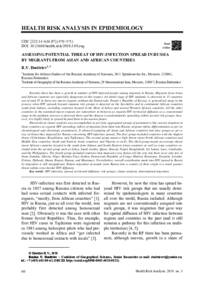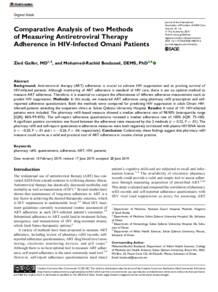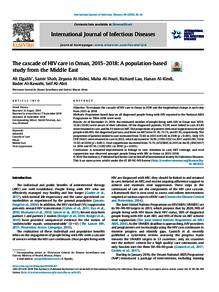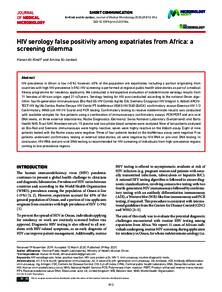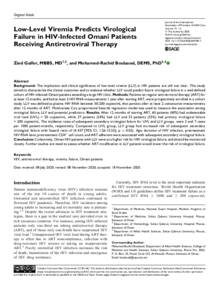Document
Assessing potential threat of HIV-infection spread in Russia by migrants from Asian and African countries.
Identifier
DOI: 10.21668/health.risk/2019.3.08.eng
Source
Health Risk Analysis, 3, p. 67-73
Country
Russia.
Publisher
Federal Scientific Center for Medical and Preventive Health Risk Management Technologies.
Gregorian
2019-01-01
Language
English
English abstract
Recently there has been a growth in number of HIV-infected people among migrants in Russia. Migrants from Asian and African countries are especially dangerous in this respect. An initial stage of HIV epidemic is observed in 13 countries out of total 97 in these two macro-regions (without the Democratic People's Republic of Korea). A generalized stage in the process when HIV spreads beyond common risk groups is detected on the Seychelles and in continental African countries south from Sahara, excluding countries located in the Horn of Africa and several Western African countries. All the other countries in the examined macro-regions are somewhere in-between as regards HIV territorial diffusion as a concentrated stage in the epidemic process is observed there and the disease is predominantly spreading within several risk groups; however, it is highly likely to spread beyond them in the nearest future. Hierarchical cluster analysis was accomplished as per four aggregated groups of parameters (the current situation in these countries as regards HIV spreading; inflow of migrants from them into Russia; migrant inflow differentiation as per its chronological and chorologic parameters). It allowed assigning all Asian and African countries into four groups as per a size of threat they imposed for Russia concerning HIV-infection spread. The first group included countries with the highest threat (Uzbekistan, Kazakhstan, and Tajikistan). The second group meant a high threat (most North African countries and Middle-East countries, South and Eastern Asian countries, and Nigeria as well). The third group meant an average threat (most African countries located to the south from Sahara and South-Eastern Asian countries as well as some countries excluded from the second group such as Libya, Saudi Arabia, Qatar, Kuwait, Nepal, Bangladesh, Sri Lanka, Laos, Cambodia, and the Philippines). The fourth group included countries that imposed a low threat (all the rest, but there were only few of them, Gambia, Liberia, Niger, Burkina Faso, Gabon, Democratic Republic of Congo, Malawi, Botswana, Eswatini, Lesotho, Eritrea, Djibouti, Oman, Brunei, Butane, and Myanmar). Nevertheless, overall contribution made into HIV spread in Russia by migration is still insignificant. Return migration of people from Russia into a country of their origin is a much greater threat within cross-border HIV diffusion.
ISSN
2542-2308
Category
Journal articles

